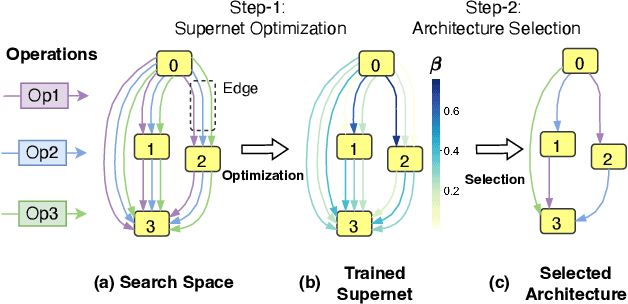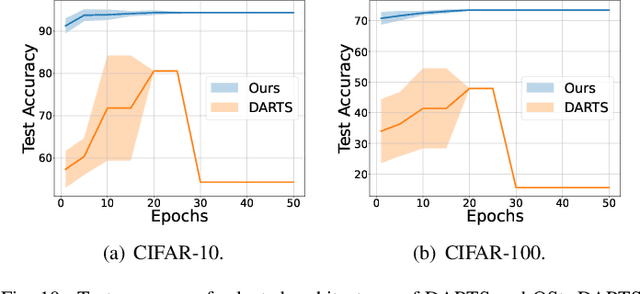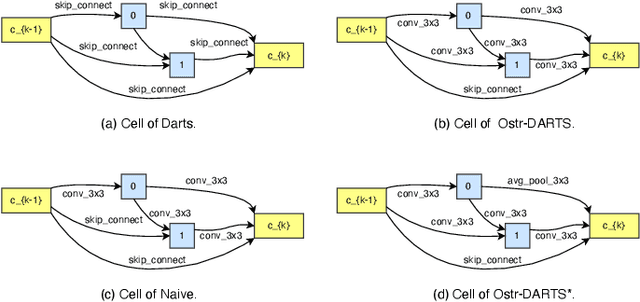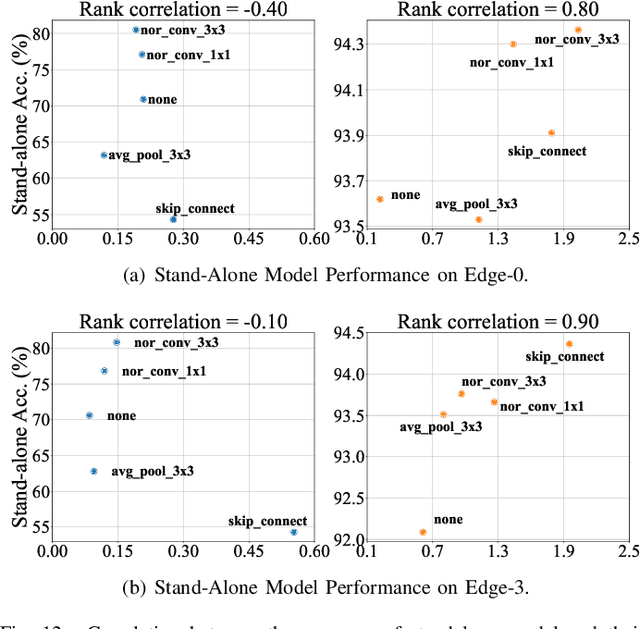Ziwei Zheng
Spot Risks Before Speaking! Unraveling Safety Attention Heads in Large Vision-Language Models
Jan 03, 2025Abstract:With the integration of an additional modality, large vision-language models (LVLMs) exhibit greater vulnerability to safety risks (e.g., jailbreaking) compared to their language-only predecessors. Although recent studies have devoted considerable effort to the post-hoc alignment of LVLMs, the inner safety mechanisms remain largely unexplored. In this paper, we discover that internal activations of LVLMs during the first token generation can effectively identify malicious prompts across different attacks. This inherent safety perception is governed by sparse attention heads, which we term ``safety heads." Further analysis reveals that these heads act as specialized shields against malicious prompts; ablating them leads to higher attack success rates, while the model's utility remains unaffected. By locating these safety heads and concatenating their activations, we construct a straightforward but powerful malicious prompt detector that integrates seamlessly into the generation process with minimal extra inference overhead. Despite its simple structure of a logistic regression model, the detector surprisingly exhibits strong zero-shot generalization capabilities. Experiments across various prompt-based attacks confirm the effectiveness of leveraging safety heads to protect LVLMs. Code is available at \url{https://github.com/Ziwei-Zheng/SAHs}.
Nullu: Mitigating Object Hallucinations in Large Vision-Language Models via HalluSpace Projection
Dec 18, 2024Abstract:Recent studies have shown that large vision-language models (LVLMs) often suffer from the issue of object hallucinations (OH). To mitigate this issue, we introduce an efficient method that edits the model weights based on an unsafe subspace, which we call HalluSpace in this paper. With truthful and hallucinated text prompts accompanying the visual content as inputs, the HalluSpace can be identified by extracting the hallucinated embedding features and removing the truthful representations in LVLMs. By orthogonalizing the model weights, input features will be projected into the Null space of the HalluSpace to reduce OH, based on which we name our method Nullu. We reveal that HalluSpaces generally contain statistical bias and unimodal priors of the large language models (LLMs) applied to build LVLMs, which have been shown as essential causes of OH in previous studies. Therefore, null space projection suppresses the LLMs' priors to filter out the hallucinated features, resulting in contextually accurate outputs. Experiments show that our method can effectively mitigate OH across different LVLM families without extra inference costs and also show strong performance in general LVLM benchmarks. Code is released at \url{https://github.com/Ziwei-Zheng/Nullu}.
OStr-DARTS: Differentiable Neural Architecture Search based on Operation Strength
Sep 22, 2024



Abstract:Differentiable architecture search (DARTS) has emerged as a promising technique for effective neural architecture search, and it mainly contains two steps to find the high-performance architecture: First, the DARTS supernet that consists of mixed operations will be optimized via gradient descent. Second, the final architecture will be built by the selected operations that contribute the most to the supernet. Although DARTS improves the efficiency of NAS, it suffers from the well-known degeneration issue which can lead to deteriorating architectures. Existing works mainly attribute the degeneration issue to the failure of its supernet optimization, while little attention has been paid to the selection method. In this paper, we cease to apply the widely-used magnitude-based selection method and propose a novel criterion based on operation strength that estimates the importance of an operation by its effect on the final loss. We show that the degeneration issue can be effectively addressed by using the proposed criterion without any modification of supernet optimization, indicating that the magnitude-based selection method can be a critical reason for the instability of DARTS. The experiments on NAS-Bench-201 and DARTS search spaces show the effectiveness of our method.
On Learnable Parameters of Optimal and Suboptimal Deep Learning Models
Aug 21, 2024Abstract:We scrutinize the structural and operational aspects of deep learning models, particularly focusing on the nuances of learnable parameters (weight) statistics, distribution, node interaction, and visualization. By establishing correlations between variance in weight patterns and overall network performance, we investigate the varying (optimal and suboptimal) performances of various deep-learning models. Our empirical analysis extends across widely recognized datasets such as MNIST, Fashion-MNIST, and CIFAR-10, and various deep learning models such as deep neural networks (DNNs), convolutional neural networks (CNNs), and vision transformer (ViT), enabling us to pinpoint characteristics of learnable parameters that correlate with successful networks. Through extensive experiments on the diverse architectures of deep learning models, we shed light on the critical factors that influence the functionality and efficiency of DNNs. Our findings reveal that successful networks, irrespective of datasets or models, are invariably similar to other successful networks in their converged weights statistics and distribution, while poor-performing networks vary in their weights. In addition, our research shows that the learnable parameters of widely varied deep learning models such as DNN, CNN, and ViT exhibit similar learning characteristics.
Rethinking the Architecture Design for Efficient Generic Event Boundary Detection
Jul 17, 2024Abstract:Generic event boundary detection (GEBD), inspired by human visual cognitive behaviors of consistently segmenting videos into meaningful temporal chunks, finds utility in various applications such as video editing and. In this paper, we demonstrate that SOTA GEBD models often prioritize final performance over model complexity, resulting in low inference speed and hindering efficient deployment in real-world scenarios. We contribute to addressing this challenge by experimentally reexamining the architecture of GEBD models and uncovering several surprising findings. Firstly, we reveal that a concise GEBD baseline model already achieves promising performance without any sophisticated design. Secondly, we find that the widely applied image-domain backbones in GEBD models can contain plenty of architecture redundancy, motivating us to gradually ``modernize'' each component to enhance efficiency. Thirdly, we show that the GEBD models using image-domain backbones conducting the spatiotemporal learning in a spatial-then-temporal greedy manner can suffer from a distraction issue, which might be the inefficient villain for GEBD. Using a video-domain backbone to jointly conduct spatiotemporal modeling is an effective solution for this issue. The outcome of our exploration is a family of GEBD models, named EfficientGEBD, significantly outperforms the previous SOTA methods by up to 1.7\% performance gain and 280\% speedup under the same backbone. Our research prompts the community to design modern GEBD methods with the consideration of model complexity, particularly in resource-aware applications. The code is available at \url{https://github.com/Ziwei-Zheng/EfficientGEBD}.
Fine-grained Dynamic Network for Generic Event Boundary Detection
Jul 05, 2024Abstract:Generic event boundary detection (GEBD) aims at pinpointing event boundaries naturally perceived by humans, playing a crucial role in understanding long-form videos. Given the diverse nature of generic boundaries, spanning different video appearances, objects, and actions, this task remains challenging. Existing methods usually detect various boundaries by the same protocol, regardless of their distinctive characteristics and detection difficulties, resulting in suboptimal performance. Intuitively, a more intelligent and reasonable way is to adaptively detect boundaries by considering their special properties. In light of this, we propose a novel dynamic pipeline for generic event boundaries named DyBDet. By introducing a multi-exit network architecture, DyBDet automatically learns the subnet allocation to different video snippets, enabling fine-grained detection for various boundaries. Besides, a multi-order difference detector is also proposed to ensure generic boundaries can be effectively identified and adaptively processed. Extensive experiments on the challenging Kinetics-GEBD and TAPOS datasets demonstrate that adopting the dynamic strategy significantly benefits GEBD tasks, leading to obvious improvements in both performance and efficiency compared to the current state-of-the-art.
DyFADet: Dynamic Feature Aggregation for Temporal Action Detection
Jul 03, 2024



Abstract:Recent proposed neural network-based Temporal Action Detection (TAD) models are inherently limited to extracting the discriminative representations and modeling action instances with various lengths from complex scenes by shared-weights detection heads. Inspired by the successes in dynamic neural networks, in this paper, we build a novel dynamic feature aggregation (DFA) module that can simultaneously adapt kernel weights and receptive fields at different timestamps. Based on DFA, the proposed dynamic encoder layer aggregates the temporal features within the action time ranges and guarantees the discriminability of the extracted representations. Moreover, using DFA helps to develop a Dynamic TAD head (DyHead), which adaptively aggregates the multi-scale features with adjusted parameters and learned receptive fields better to detect the action instances with diverse ranges from videos. With the proposed encoder layer and DyHead, a new dynamic TAD model, DyFADet, achieves promising performance on a series of challenging TAD benchmarks, including HACS-Segment, THUMOS14, ActivityNet-1.3, Epic-Kitchen 100, Ego4D-Moment QueriesV1.0, and FineAction. Code is released to https://github.com/yangle15/DyFADet-pytorch.
Fine-tuning Large Language Models for Multigenerator, Multidomain, and Multilingual Machine-Generated Text Detection
Jan 22, 2024Abstract:SemEval-2024 Task 8 introduces the challenge of identifying machine-generated texts from diverse Large Language Models (LLMs) in various languages and domains. The task comprises three subtasks: binary classification in monolingual and multilingual (Subtask A), multi-class classification (Subtask B), and mixed text detection (Subtask C). This paper focuses on Subtask A & B. Each subtask is supported by three datasets for training, development, and testing. To tackle this task, two methods: 1) using traditional machine learning (ML) with natural language preprocessing (NLP) for feature extraction, and 2) fine-tuning LLMs for text classification. The results show that transformer models, particularly LoRA-RoBERTa, exceed traditional ML methods in effectiveness, with majority voting being particularly effective in multilingual contexts for identifying machine-generated texts.
 Add to Chrome
Add to Chrome Add to Firefox
Add to Firefox Add to Edge
Add to Edge